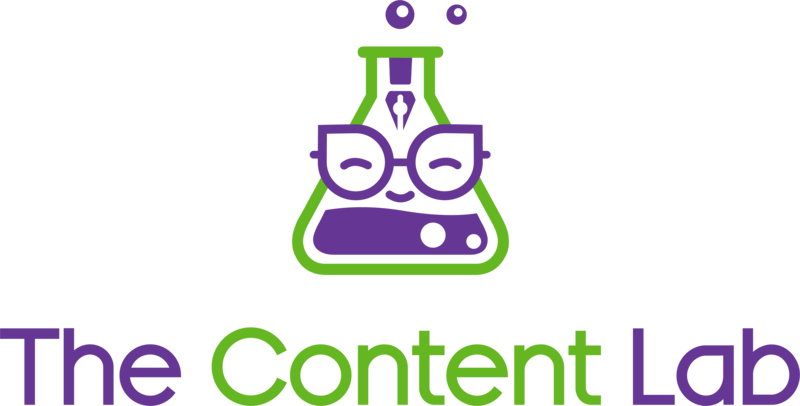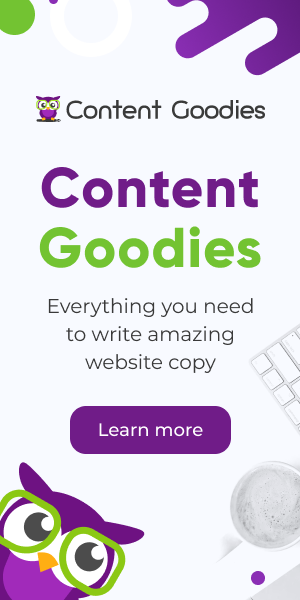There are red flashing sirens in every digital agency around the world, marketers are panicking, SEO experts are hiding under desks, and copywriters are throwing their laptops out windows!!!
No, it’s not a meteor about to hit the earth.
It’s dun, dun, duuuun… Google’s new algorithm update.
Okay, I’m being dramatic (hey, what’s new?), but only because I’m a professional copywriter and boy, do we like a good story.
And as a professional copywriter at The Content Lab, I’m not panicking about Google’s new Helpful Content update.
Myself and the other copywriters here? We.are.rejoicing!
Why? Because Google’s new algorithm update is rewarding what we’ve been earnestly doing here at The Content Lab for 10+ years: creating quality content written for humans-first.
But enough about us doing a big ol’ “I told ya so”. What do digital agencies and other copywriters need to know about writing for the web post-apocaly- I mean, post-algorithm update?
Just hang tight because I’m about to dive into:
- What Google’s Helpful Content update is
- Why you should give a damn about it
- How the algorithm update will work
- Why SEO-first content is over
- How to write copy the new algorithm will love
So what’s all the fuss about with Google’s latest update? Why is it such a big deal for copywriters and digital agencies? How can you ensure your website rankings don’t fall off a Google update-caused cliff?
So many questions! Let’s take it one at a time as I tell you everything you need to know and
give you my top SEO copywriting tips to appease Google’s new “Helpful Content” rules.
What Google's Helpful Content update is
Before I talk about your post-update strategy and give you my best SEO copywriting tips to survive the algorithm change, here’s an explanation of Google’s new algorithm update for those of you who don’t know.
Google has announced that they’re launching the Helpful Content update to “better ensure people see more original, helpful content written by people, for people, rather than content made primarily for search engine traffic”.
Released on August 25th 2022, Google will roll out the update for two-ish weeks after that.
Why digital agencies and copywriters should give a damn (many damns, actually)
Okay, not to scare anyone, but the last major content-related algorithm update, affectionately known as “Panda,” wreaked absolute havoc on even top-performing websites, causing rankings to nosedive. Many businesses even had to close, relying solely on their organic traffic for marketing!
Despite the cute name, the Panda update was anything but cute. In 2011, the algorithm changed to crack down on poor-quality content that really intensified with “content farms” spewing out crappy content stuffed with keywords.
This was a significant shift in how we do SEO copywriting and how Google ranks content online. And I reckon we’ll see something similar over the next few months and years in Google’s quest to improve content quality standards.
Who the algorithm update will mess with the most
Google said that the types of content likely to be affected the most by the update will be “online educational materials, arts and entertainment, shopping, and tech-related content”.
This is because these are traditionally the types of content that go with an SEO-first approach the most and tend to rehash material from other websites rather than create their own from scratch.
Another thing: Currently, the update will only target English-written websites, so if you’re writing in another language, congratulations.
But the algorithm will come to get you eventually.
Again, I’m not trying to be a “scaremonger”; I’m just failing to resist the “drama” of it all!
How will Google's algorithm work?
If you’re someone that doesn’t want to know the nitty-gritty details, feel free to skip this section. But if you want to understand how Google’s algorithm change will work to rank “helpful content”, then stay with me.
So, the algorithm itself is a set of Google systems (machine learning, etc.) that “automatically identify content that seems to have little value, low-added value or is otherwise not particularly helpful to those doing searches”. – Google


The other important thing to note is that Google’s update won’t just affect pages on your website deemed “unhelpful”.
This is a site-wide signal, meaning even if you have primarily great content in Google’s eyes, a few unhelpful pages/blogs can bring your score down and affect overall rankings.
Hallelujah! The world can join us on our mission to write website content for real, living, breathing humans – not just Google’s SEO robots. But, what do I mean by that?
The difference between human-first and SEO-first copywriting
In a nutshell, Google’s algorithm update will reward websites that produce genuinely helpful, high-quality content and (though they didn’t outright say it) penalise websites that dish up poor quality (usually regurgitated) content that’s written mainly for search engines.
Why writing SEO-first content doesn’t work
So, why is writing with an SEO-first mindset a poor marketing strategy? Let’s use one of my favourite anecdotal topics: dessert.
Okay, so you’re peering into the window of an artisan bakery to choose your treat.
You spot what appears to be “the perfect” brownie. It looks fudgy and decadent and has that beautifully glossy crinkly top that screams, “eat me!”
So you buy it while trying to contain your drool. But then, when you bite into it, to your HORROR, it’s dry, barely even tastes like chocolate, and makes you want to cry.
It looked amazing. It tasted “meh”.
That’s what SEO-first copy does to your audience. It’s disappointing, difficult to digest, and lacks “flavour”.
Your audience clicks on the title of your blog or website page in Google’s search results, thinking they’ll get the exact information they’re looking for and a rich content experience.
Instead, what they find is half-hearted, robot-y content that:
Isn’t what your meta description “sold” them
Doesn’t answer their question/ satisfy them
Reads awkwardly or is too long/ too boring
Wastes their time & forces them to search again
Why writing human-first content is the way to go
Human-first content is better than writing primarily for search engines because writing this way gives your website and blog copywriting real substance. Human-first content is written well and written for your reader, not just to look good for Google’s “shop window.”
Google recognises that writing human-first is better because it:
Is written directly for the reader
Delivers better, more fully formed answers
Rewards expert over “rehashed” content
Gives users a different, original perspective
And now, they’re giving it more precedence than ever before. Obviously, optimising your content for SEO best practices is essential. Still, Google is saying that it’s not THE most important thing, and content written just to “outsmart” their algorithm isn’t going to fly much longer.
Ask yourself these questions to ensure content is human-first
Google published a list of questions to help creators determine whether their content was human-first or not. Here they are (edited):
Will your audience find this content useful?
Do you show off your own unique expertise?
Does your website have a specific niche?
Will your content help someone accomplish their goal?
Will your content make someone leave feeling satisfied?
Are you writing with our best practices in mind?
Are you writing content to attract users on search engines or writing for them?
Do you write content on many topics hoping they’ll rank well?
Do you use a lot of AI copywriting or automation?
Do you primarily regurgitate what others say without adding a unique perspective?
Are you writing content on trending topics just because they’re trending?
Will your audience need to search again for better information?
Are you writing unnecessary stuff to hit a higher word count?
Are you writing on a niche subject to get search traffic and not because you’re an expert?
Are you trying to answer an unanswerable question – like a release date for a movie that hasn’t been verified?
Psst: If you’re not sick of my cake analogies yet (and if not, HOW?), then head over to my other ludicrously cakey blog, “How to bake a content cake: our recipe for delicious copywriting that converts.”
My 8 top tips for SEO copywriting the new algorithm will love
Right, we’ve covered what the new Google algorithm update is, how it works, and why you should give a damn. Now comes the most helpful part of this blog, my top tips for writing content that Google’s new algorithm will love (see, Google? I’m helping!)
1. Write human-first (obviously)
Okay, I know you know this now. But make sure you’re writing content that’s intended to offer your target audience genuine quality. Make it engaging, informative, in-depth, and original. When writing a new website or blog, ask yourself, “will my target audience give a sh*t?” If the answer is “no”, don’t include it just for SEO’s sake.
2. Know your niche
If you’re attempting to write about subjects you’re not an expert on or experienced in – not only will your audience be able to smell the inauthenticity, but Google will sniff you out too. Write what you know, and don’t be afraid to show off your expertise. If you’re not an expert? Interview other experts for your content.
3. Ask for feedback
Get to know your target audience really well. Reach out to people you know read your work and ask them what they like/don’t like about it, if they find it helpful, what other topics they want you to cover, and some issues they’re having that you can help with. Use what you learn to craft super informative, targeted content.
4. Create “pillar” content
Content pieces like “ultimate guides” will ensure users don’t need to perform another search to satisfy their query/ accomplish their goal. So we may see the algorithm update favour “pillar” content that meets an array of search queries in one. These long-form pieces take a lot more effort to write, but the payoff is so worth it – and now? Even more so.

5. Write for the journey
Awareness, consideration, and conversion: pretty much every digital agency will be well aware of three words. But how much content do you have to satisfy every stage of the buyer journey? Make sure you’re creating content that will answer queries for those new to your business as well as those looking to deepen their knowledge of something.
6. Don’t “force” keywords
It’s a copywriting pet peeve of mine to see websites or blogs that don’t weave keywords naturally into their copy. When the sentence reads poorly, monotonous, or awkwardly due to you including a keyword phrase, do yourself a favour and take it out. Focus on writing great content first and you’ll find the keywords fall naturally into place.

7. Make your content user-friendly
Use bullet point lists, headings, and subheadings to format your content and simple, easy-to-understand language with concise sentences to increase readability. When it comes to SEO, these things really do matter, as they all feed into the overall user experience.
8. Create an optimisation strategy
Now you’re aware of how to make your content satisfy Google’s new best practices; it’s time to start optimising what you think may be classed as “unhelpful” content on your website or removing it altogether. You should also revisit your overall content strategy to write future articles/ websites that make sense for the algorithm.
How long will it take to see results?
If you’ve noticed issues with your Google rankings as a result of the algorithm update, it can take a good few months to recover after you’ve optimised your website/blogs for the new best practices. Google needs to see that you’re no longer producing “unhelpful” content over a long period and will continuously monitor your content to get the assurance they need to start lifting your rankings again.
What does the future of content look like?
I hope you (and Google) think my deep dive into Google’s algorithm update and new SEO copywriting best practices has been “helpful.”
Post-update, I think we’re going to see Google place a more considerable emphasis on engagement metrics to rank content and less of a focus on keywords. I also think agencies and copywriters will spend a lot of time updating older content and will update content more regularly going forward.
I can also see Google giving more points to comprehensive content that answers a range of search queries at once, agencies creating content that will focus more on original perspectives and expert opinions, and AI copywriting tools taking a big hit.
Having said that *puts away crystal ball* It’s still super early days. Only time will tell how the algorithm update will affect our clients and businesses over the coming years. But I do very much believe that the changes will be for the better.
Need a professional copywriter to worry about algorithm updates, so you don’t have to?
Well, you’re in the right Content Lab, where we merge science and art to cook up on-point websites, blogs, emails, and social media posts your audience will love. We’re content-obsessed word nerds, so you don’t have to be.
Ready to get started? Chat to our head honcho, Bosco, the dog. If Bosco is too busy barking at cats to pick up the phone, email our Head Content Strategist and Founder Abby.


